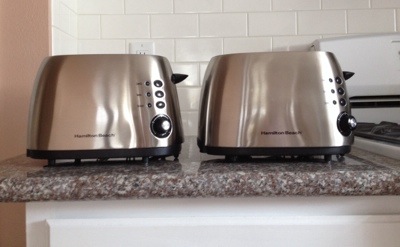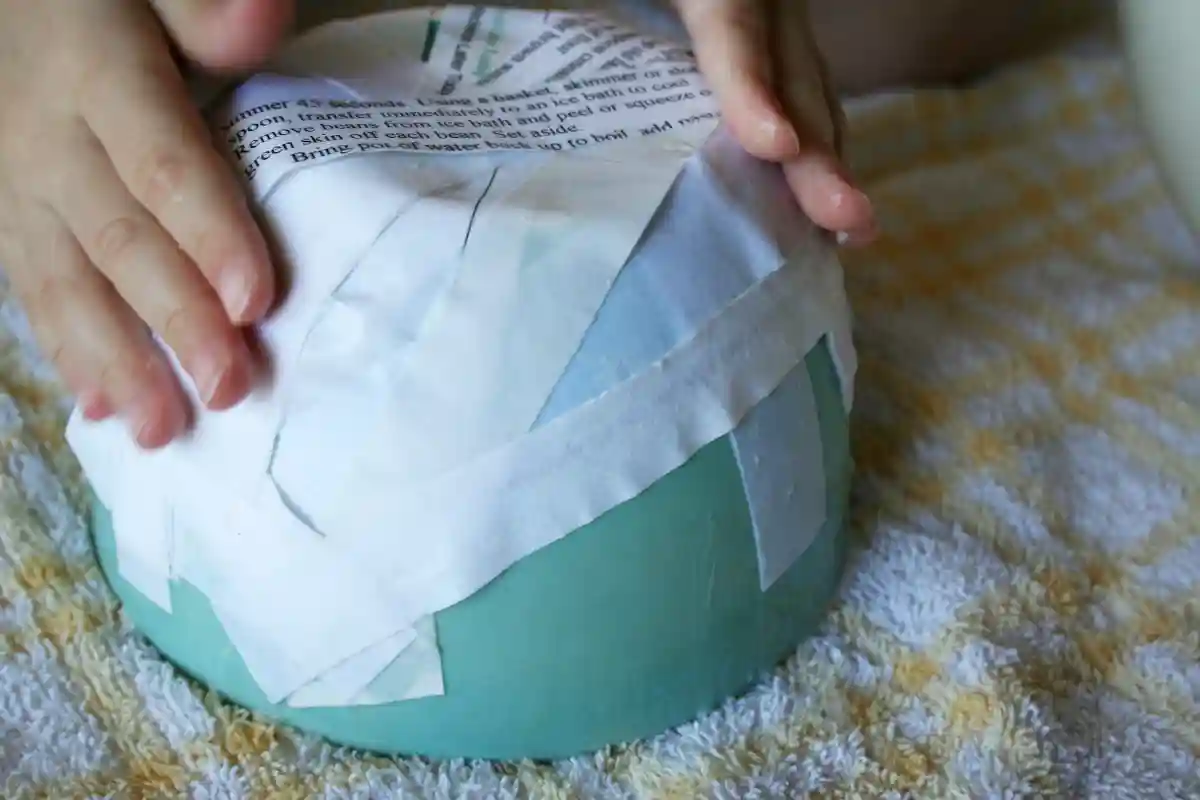Do Celiac Families Really Need Two Toasters?
Those of us in the celiac community have often been advised to take every precaution necessary to avoid cross contamination in the kitchen and elsewhere. In the below Children’s National Hospital study, researchers have discovered that certain scenarios may result in less gluten exposure than previously thought. I certainly welcome any new research that ultimately makes living gluten-free easier, while remaining healthy, but if you look at my family’s non-GF toaster, there are crumbs on the side, probably from a pushed in bagel, as well as on the bottom, so I’m not so sure I would want to throw out my GF toaster! Yes, perhaps the study results do reveal that cross contact in some cases (as noted below), tested below 20 ppm, and that is great news, but it is certainly a personal choice whether to loosen up (using same toaster, pots) on some of your kitchen practices, while continuing to be ever diligent with good kitchen and personal hygiene, based on results of this preliminary study. Would I put a slice of my GF bread into a B&B’s toaster, well I would need to inspect it very thoroughly first and even then I’m not sure I’d do it. The study results are encouraging though and I look forward to more studies on gluten exposure risks! Feel free to share your thoughts in the comments section below.
From article: “This study provides novel data that quantifies the risk of gluten exposure when preparing gluten-free food alongside gluten-containing foods and highlights the need for further study in this area so that recommendations can be evidence-based” .
Below is article published on childrensnational.org
Do Celiac Families Really Need 2 Toasters?
Preliminary study suggests that risk of gluten transfer in common-cooking activities may be lower than previously thought
Date: September 25, 2019
Source: Children’s National Hospital
WASHINGTON – Parents using multiple kitchen appliances and utensils to prevent their child with celiac disease from being exposed to gluten may be able to eliminate some cumbersome steps. A new, preliminary study from Children’s National Hospital published in the journal Gastroenterology found no significant gluten transfer when tools like the same toaster or knives are used for both gluten-free and gluten-containing foods.
The study authors found that performing these types of kitchen activities using the same kitchen equipment may not pose a high risk of gluten exposure for people with celiac disease. Additionally, basic kitchen hygiene, including routine washing of utensils and equipment with soap and water and handwashing, can further reduce or eliminate gluten transfer.
The authors tested three scenarios where it was thought that gluten transfer could be high enough to pose a gluten exposure risk for someone with celiac disease—in general, greater than 20 parts per million (ppm) or .002{5676e3b156b07d12bd9df9fe13d641a85da396026abde11a1ff2d0afc1b3c015}.* However, the study found less gluten transfer than expected in the following scenarios:
- Toasting bread: Gluten levels remained at less than 20 ppm when gluten-free bread was toasted in the same toaster as regular bread, across repeated tests and even when gluten-containing crumbs were present at the bottom of the toaster.
- Cupcakes: Gluten levels also remained below 20 ppm in most cases when a knife used to cut frosted gluten-containing cupcakes was then used to cut gluten-free cupcakes, even when visible crumbs were stuck to the icing on the knife.
- Pasta: Cooking gluten-free pasta in the same water as regular pasta did cause significant gluten transfer, sometimes as high as 115 ppm. However, if the gluten-free pasta was rinsed under running tap water after cooking, the gluten transfer dropped to less than 20 ppm. If the pasta pot was simply rinsed with fresh water before being reused, then gluten transfer was undetectable.
*U.S. Food and Drug Administration regulations allow foods with less than 20 parts per million of gluten to be labeled “gluten-free.” It is not possible to detect zero ppm—the lowest detected level is 3 ppm (.0003{5676e3b156b07d12bd9df9fe13d641a85da396026abde11a1ff2d0afc1b3c015}).
“So many celiac parents, including me, have taken every precaution to prevent a gluten exposure in our homes. In many cases that means having two of everything—toasters, knives, and pasta pots, with little or no hard evidence showing we needed to,” says Vanessa Weisbrod, executive director of the Celiac Disease Program at Children’s National Hospital, who conceived and led the study. “Though the sample is small, this study gives me hope that someday soon we’ll have empirical evidence to reassure the families we work with that their best defense is not two kitchens—it’s simply a good kitchen and personal hygiene. And, that we can travel to grandma’s house or go on a vacation without worrying about a second toaster.”
“These are areas of the kitchen where today we coach families to exercise an abundance of caution. We still recommend following all guidelines from your celiac care team to prevent cross contamination while we do further study,” adds Benny Kerzner, M.D., the study’s senior author and director of the Celiac Disease Program at Children’s National Hospital. “But the results are compelling enough that it’s time for our larger celiac community to look at the current recommendations with a critical eye and apply evidence-based approaches to pinpoint the true risks for families and eliminate some of the hypervigilant lifestyle changes that we sometimes see after a family receives a celiac diagnosis.”
“This study provides novel data that quantifies the risk of gluten exposure when preparing gluten-free food alongside gluten-containing foods and highlights the need for further study in this area so that recommendations can be evidence-based,” notes Jocelyn Silvester, M.D., Ph.D. FRCPC, director of Research for the Celiac Disease Program at Boston Children’s Hospital who led the study’s biostatistical analysis.
The authors maintain that the most important thing families can do to prevent gluten reaction is practicing simple hygiene steps that include washing pots, pans and kitchen utensils with soap and water after each use (and before using them to prepare gluten-free food) and for all family members to wash their hands with soap and water before preparing gluten-free food.
“The treatment burden of maintaining a strict gluten-free diet has been compared to that of end-stage renal disease, and the partner burden to that of caring for a cancer patient,” says Marilyn G. Geller, chief executive officer of the Celiac Disease Foundation. “This preliminary study is encouraging that this burden may be reduced by scientifically evaluating best practices in avoiding cross-contact with gluten. We congratulate the Children’s National Celiac Disease Program team in taking this important first step in bettering the lives of celiac disease patients and their loved ones.”
About Children’s National
Children’s National Hospital, based in Washington, D.C., has served the nation’s children since 1870. Children’s National is the nation’s No. 6 pediatric hospital and, for the third straight year, is ranked No. 1 in newborn care, as well as ranked in all specialties evaluated by U.S. News & World Report. It has been designated two times as a Magnet ® hospital, a designation given to hospitals that demonstrate the highest standards of nursing and patient care delivery. This pediatric academic health system offers expert care through a convenient, community-based primary care network and specialty outpatient centers in the D.C. Metropolitan area, including the Maryland suburbs and Northern Virginia. Home to the Children’s Research Institute and the Sheikh Zayed Institute for Pediatric Surgical Innovation, Children’s National is the seventh-highest NIH-funded children’s hospital in the nation. Children’s National is recognized for its expertise and innovation in pediatric care and as a strong voice for children through advocacy at the local, regional and national levels.
For more information, follow us on Facebook and Twitter.
#



